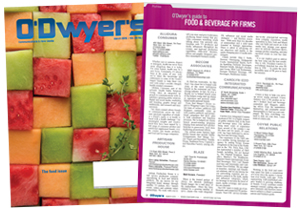 Every story has two sides. Last summer, an anonymous restaurant owner took to the Internet to defend his restaurant against complaints of slow service.
Every story has two sides. Last summer, an anonymous restaurant owner took to the Internet to defend his restaurant against complaints of slow service.
The time customers spend at tables has nearly doubled since 2004 — to an hour and 55 minutes — but using security video footage, the restaurateur surmised the issue stemmed from diners dawdling on mobile devices and taking pictures of food. The viral menu-festo concluded with a request for diners to be “a bit more considerate.”
The frustration is understandable; any diner can now have the influence of a New York Times food critic. However, online reviews also provide those in the restaurant business an unprecedented opportunity to expand their reach, drive awareness and attract more diners. Here’s how our social, mobile world can be a boon to businesses.
Leverage social content
Posting photos about a dining experience is far from universal. Only 13% of people who have dined out and use social media have posted a food or drink picture in the past month. Still, that’s equal to 29.2 million people, according to a recent survey by Mintel.
|
|
When reviewing a restaurant, diners aren’t solely interested in pointing forks at disappointing experiences. Fourteen percent of diners have left a positive review on a restaurant’s social media page.
What’s that worth? Positive reviews influence nearly one in five diners to eat somewhere. That may not sound like a lot, but the impact of these reviews requires minimal investment by the restaurants. One Florida restaurant believes that positive reviews hold so much value that they allowed patrons to pay for meals by posting pictures and comments to Instagram.
Unsatisfied customers will always exist, mistakes happen and sometimes diners have unrealistic expectations. While no complaint should go ignored, the more important ones may occur online. If someone complains in person, only the people in the dining room will know about it. An online complaint on your social media property or a review site lasts forever and has a limitless audience.
When facing a negative review or frustrated customer, stay calm, explain your side without being defensive, and offer to make it right. If you’re part of a franchise and a customer vents about an issue at another location, consider responding if that franchise ignores or takes its time responding. The same strategy can work to win diners from competitors.
Responding and addressing a negative review can turn it into a net positive and create a brand advocate.
“There’s a growing body of evidence that shows great service recovery actually converts customers into more loyal and profitable ones,” wrote Denise Lee Yohn in QSR Magazine. “So a negative review represents a brand-building opportunity.”
Let diners work for you
In an attempt to capitalize on this new era of socially shared dining experiences, some restaurants have sacrificed flavor for better presentation.
“A snapshot of a new dish uploaded last night can cause a bump in reservations this afternoon,” wrote Pete Wells, restaurant critic for The New York Times. “Chefs who serve camera-ready plates find their dining rooms full of volunteer publicists, who work for free and leave money on the table when they go home.”
Though it’s not wise to serve an inferior product, as Wells said he has experienced, balancing deliciousness and eye candy is probably your best bet. Though beautiful food is a great way to get people to create content on your behalf, staying true to your brand also works. Known for its ribs, Tony Roma’s launched its #TRSauciestCouple campaign for Valentine’s Day. The restaurant encouraged couples to get messy eating ribs and share pictures of the aftermath on Instagram.
Providing people financial incentives to post content can work, too. Research by Mintel suggests that combining technology and a loyalty program might be the best course of action. Nearly 70% of respondents said they preferred loyalty programs that provided points toward future transactions.
React to trends
Online reviews are free data. Considering most diners post infrequently, you can safely assume that what they do critique is important. This information gives you the opportunity to create a better customer experience, reduce bad reviews and increase good ones.
Even if your restaurant hasn’t yet generated much social chatter, it doesn’t mean that valuable information isn’t available. Tony Roma’s tweaked its offerings after mining competitors’ social media coverage, says Jay Winborne the restaurant’s communications manager. To generate awareness, they tied the recipe tweak to a social campaign called Crave the Kick.
“You see what people are talking about, what’s in,” Winborne said. “For a while everyone wanted to put kale in everything. Recently, we’ve taken a couple of our classic dishes and added a zestiness, a spiciness, so it has a kick.”
Social media’s ability to uncover insights about customers and food has increased the speed in which tastes spread and forces restaurants to become more flexible.
“New ideas and techniques zoom around the world with head-spinning speed,” Wells wrote. “It took years for nouvelle cuisine to book passage across the Atlantic. After Dominique Ansel unveiled his doughnut-croissant hybrid, the Cronut, last May, it took less than two weeks for a copycat to appear in Melbourne, Australia.”
Restaurants that have removed anonymous posts, or have banned cameras from the dining room — a fruitless endeavor considering most everything has a camera these days — should instead embrace this new reality. Sharing about food isn’t a fad — it’s part of human nature.
“Sharing food has always been a social ritual, and sharing photos of that food can serve as an extension of this, especially when loved ones are absent,” said Nathalie Nahai, a Web psychologist.
Restaurants have little to fear in our new social and mobile world. The threat of social media doesn’t come close to matching its opportunities. The challenge is finding insights among millions of posts. Social media monitoring software can mine only what’s relevant, whether you choose to look at posts from certain geographical locations or mentions of specific cuisines.
Instead of seeing patrons as diners preoccupied by their mobile devices, imagine a dining room full of marketers, PR pros and product innovators. Restaurants need to accept and leverage this social world even if diners don’t necessarily realize that their mobile habits are to blame for longer stays at restaurants.
* * *
Mark Thabit is CMO of Cision.



 What the biggest meal of the day can teach us about serving up effective nutrition communications campaigns.
What the biggest meal of the day can teach us about serving up effective nutrition communications campaigns. Tips to refine and amplify your CPG brand strategy to win in 2024 and beyond.
Tips to refine and amplify your CPG brand strategy to win in 2024 and beyond. Strategic communications strategies for success in the growing “food is medicine” movement.
Strategic communications strategies for success in the growing “food is medicine” movement. How brands can authentically communicate sustainability issues and create a brand experience that’s compatible with consumers’ values.
How brands can authentically communicate sustainability issues and create a brand experience that’s compatible with consumers’ values. Communicating the effects that climate change and a growing world population have on our food system—and why change is needed.
Communicating the effects that climate change and a growing world population have on our food system—and why change is needed.


 Have a comment? Send it to
Have a comment? Send it to 
No comments have been submitted for this story yet.